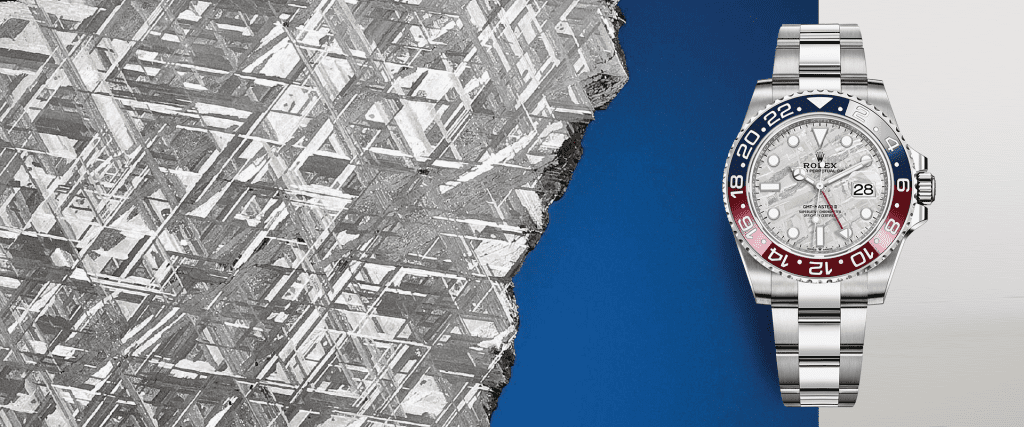Sourcing Your Pure Organic Meteorites
“Where do watch companies get all that meteorite they put in their watches” is a question you may have once asked yourself and then promptly filed in the “can’t be bothered googling” folder. Well, I’ve already done all the heavy lifting so you don’t have to.
Watch companies rely on you believing that meteors are a rare material. But about 44,000kg of the stuff rains down on earth each day. However, considering most of it is dust, and our oceans catch most of it, that number can get whittled down pretty quick. If you’re hoping to pick one up, your best bet is in a desert or the Antarctic where they stand out like sore thumbs. But Rolex employees aren’t wandering around deserts hoping for the best. Most watches source materials from a couple well known meteorites. The most popular being the 26,000kg Gibeon meteorite in Namibia which is scattered over a 275 km long and 100 km wide area long ago during our prehistory. Before luxury watches twigged to the precious rocks, the locals were busy using the material for tools and weapons.
Cutting pieces of it into slices reveals amazing octahedron designs that are perfect for high end products like the Rolex GMT Master II which features a piece of Gibeon, as the watches face set in a white gold case.
While there’s plenty on sale online at the moment, pieces of Gibeon are going to get harder to find, with Namibia putting a ban on people looting the stuff. In fact, most countries are starting to clamp down on the practice. So if you’re hoping to wear a piece of rock older than the earth itself, there’s no time like the present.
GMT-MASTER II New 2019
NZ$56,350
Oyster, 40 mm
18ct white gold
calibre 3285 movement
Scratch-resistant sapphire

